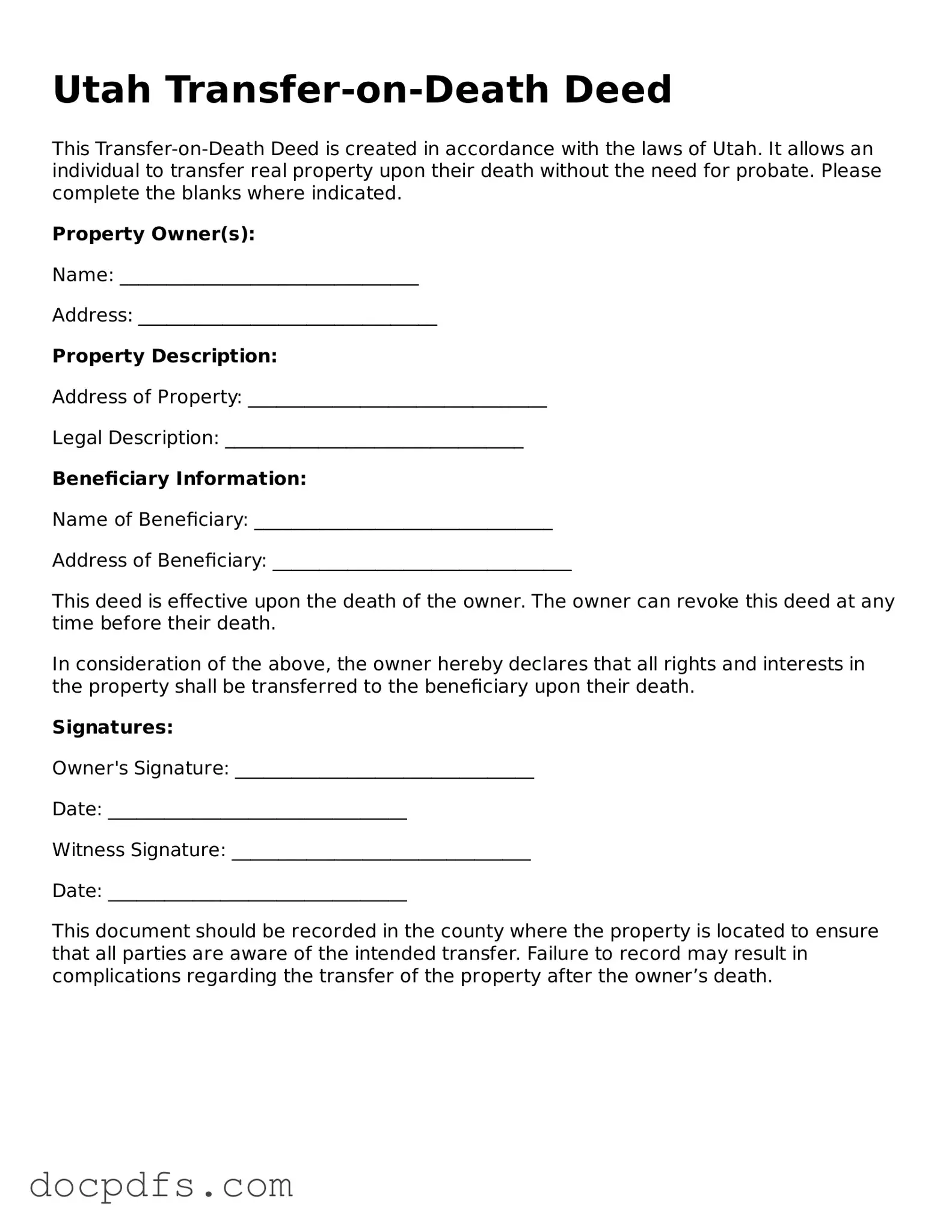Free Utah Transfer-on-Death Deed Form
The Transfer-on-Death Deed form in Utah allows property owners to designate beneficiaries who will receive their real estate upon the owner's death, without the need for probate. This legal instrument simplifies the transfer process and can help avoid potential disputes among heirs. Understanding its requirements and implications is essential for effective estate planning.
Open Transfer-on-Death Deed Editor Now
